Zi Hao from the concave temple
Qubit Report | Public Account QbitAI
Readers who know the game “MineCraft” must be familiar with such a picture.
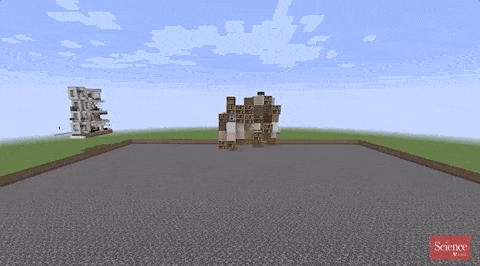
△Source: Science Magazine
But if you build a house Not people, but AIWhat?
This is the scholars from Copenhagen University of Information Technology, York University and Shanghai University, using 3D Neuron Cell Automata (NCA)New research completed.
Not only can Generate static structure, Of course not only apartments, but also trees and castles:
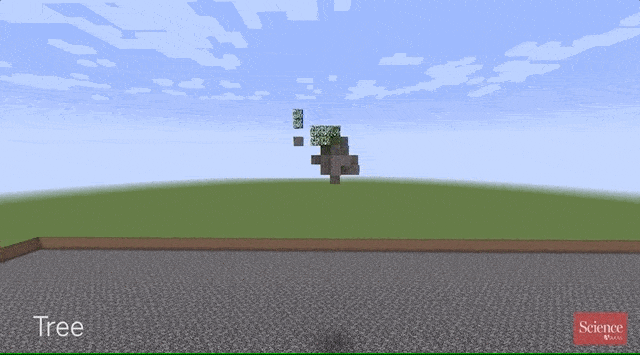
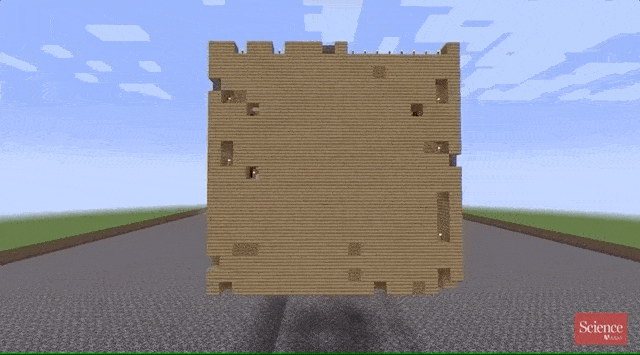
△Source: Science Magazine
Can also generate Functional machine, Such as a crawling caterpillar:

△Source: Science Magazine
Put it all in two paragraphs and still play Regeneration, A successful clone…

(Huh~ I have a sense of the picture)
how did you do that?
Application of Neuron Cell Automata
Researchers are actually influenced by the “Game of Life” Cellular Automata (CA) Inspired, developed on the basis of 2D 3D Neuron Cell Automata (NCA).
“Game of Life” is made based on the principles of cellular automata, which can also be said to be a demonstration of cellular automata.
It was invented by the British mathematician John Conway in 1970. In the grid, each square is inhabited by a cell, Its state is determined by the 8 surrounding cells, Black represents cell survival.
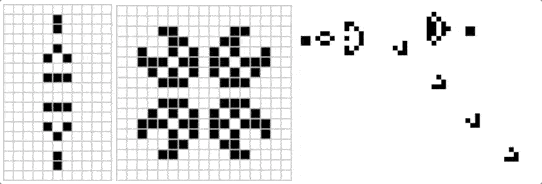
Since then, many studies have adopted more complex neural network rules, known as Neuron Cellular Automata (NCA). However, most of its applications are limited to 2D structures, or only simple 3D structures can be generated.
In order to improve the versatility of NCA in practical applications, the research team developed 3D NCA.
It uses 3D convolutionCapture more cells around to generate complex 3D structureAnd has More typesConstruction unit.

△3D Neuron Cell Automata Update Rules
Researchers are trying to use NCA to generate target entities from a single living cell and use supervised learning to optimize reconstruction loss.
In addition, the entities in “Minecraft” are used as cells in the 3D grid, and their state vectors include: block type, survival state, and hidden state.
However, since each unit is a single block type, they treat the structural reconstruction task as a Multi-class classification problem, Predict the type of a given unit.
Using the combination of LogSoftmax and NLLLoss methods provided by Pytorch, the realization is between the target and the predicted cell structure, Minimal cross entropy loss.
This loss leads to unstable performance**, and the model exhibits a preference for “air” blocks.
In training, the “air” block usually occupies most of the selected structure, therefore, Unbalanced training dataMay cause the model to over-predict.
To solve this problem, the researchers divided the loss calculation into two parts according to whether it was classified as an “air” block, and added a Crossover overlap (IOU) cost, To measure the absolute difference between the non-“air” block and the entity to improve accuracy.
How’s the effect?
For the model in static structure and dynamic function machine Refactoring performance, The researchers evaluated and recorded various parameters.
The results show that the reconstruction ability of NCA has Robustness:
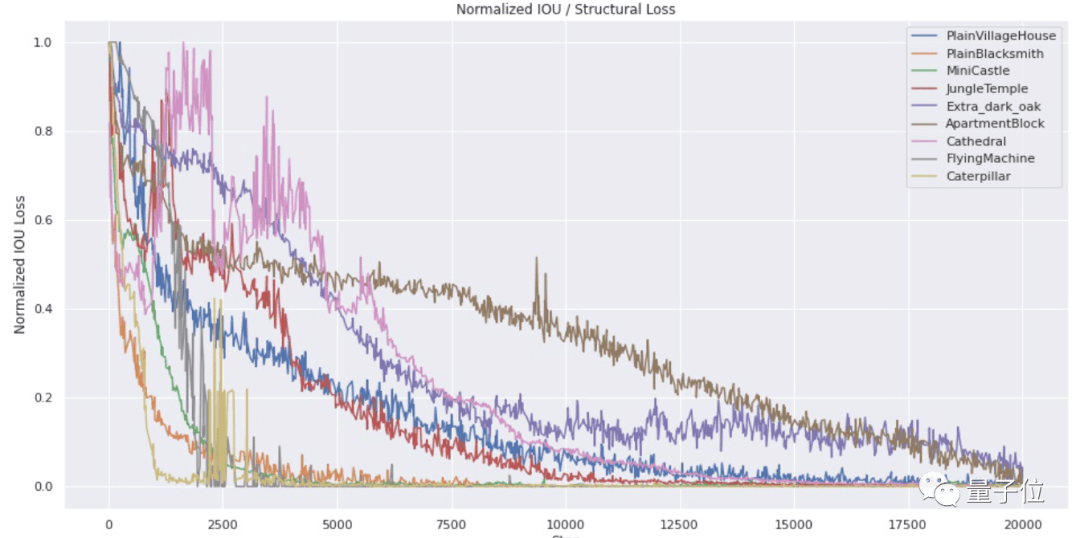
△Normalized IOU/Structural Loss
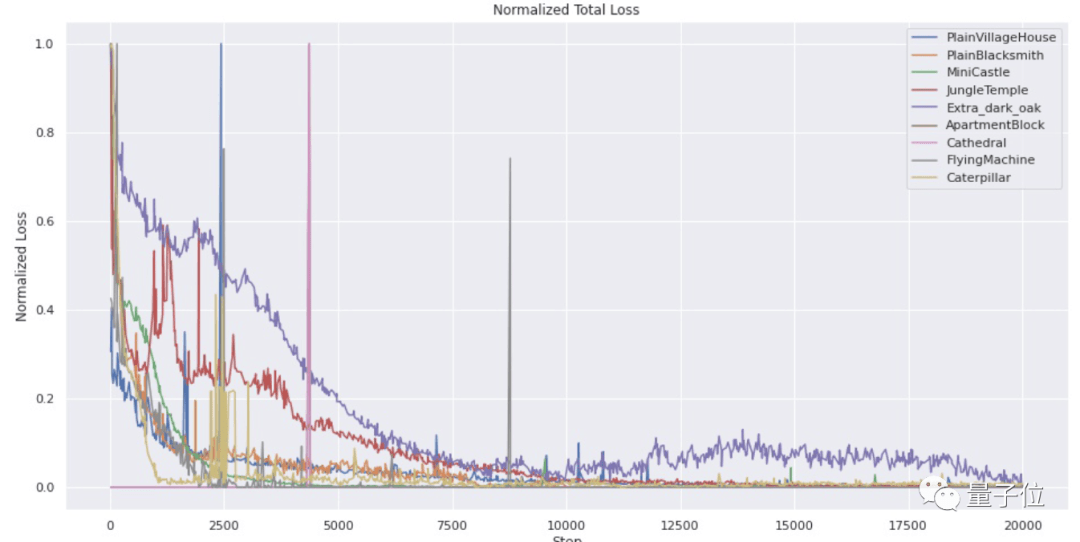
△Normalized total loss
However, NCA is Build larger entities(E.g. church) is still challenging because the model often falls into a local minimum and takes longer to train.
Although the cathedral model has lower losses than some entities, there are many Randomly generated structure, So no other entities are natural. Comparison of target structure and generation effect:

In addition, it is more difficult to generate more random entities in nature (such as oak trees).
As mentioned earlier, NCA can Generate static structure, And can well increase the number of single block types, generating Diverse and complex interior, Such as inside an apartment building:
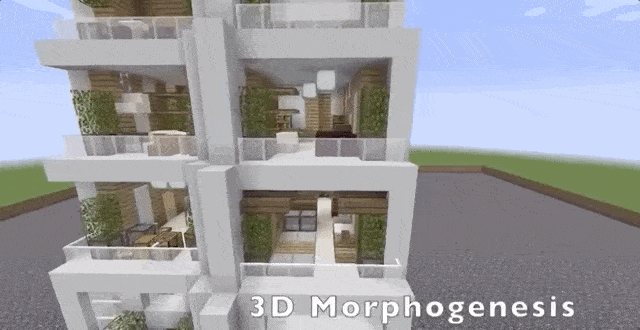
Surprisingly, in the jungle temple, NCA even generated an arrow trap.

When generating functional machines, the researchers found that Different structures have different generation modes:
Some structures gradually expand from small cells to their final form; while caterpillars are rapidly formed first, and then eliminated cells to form the final structure.
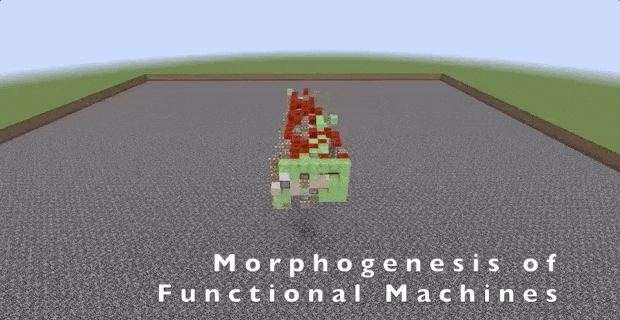
△Source: Science Magazine
In addition, the regenerative properties of NCA are also a highlight. In addition to the growth of complex structures from a single cell, these local renewal rules also allow Regenerate or repair damage.
Even without training, it can still restore some damaged structures, such as trees:

However, the researchers found after comparative testing:
Without regeneration training, the regeneration rate of the model is only 30%; after regeneration training, the regeneration rate can reach 99%.
3D NCA has attracted widespread attention from netizens, and some netizens mentioned on reddit:
The application of NCA in physics is also worth exploring. For example, it can be used to simulate crystal formation.
The application of NCA in physics is also worth exploring. For example, it can be used to simulate crystal formation.

— Finish—
This article is the original content of the NetEase News•NetEase Featured Content Incentive Program account[qubit]. It is forbidden to reprint without the authorization of the account.
Join the AI community and expand your network in the AI industry
Qubit “AI Community” is recruiting!Welcome AI practitioners and friends who are concerned about the AI industry to scan the QR code to join, and 50000+nameFriends pay attention to artificial intelligence together Industry Development & Technology Progress:
Qubit QbitAI · Toutiao Signing Author
վ’ᴗ’ ի Tracking new trends in AI technology and products
One-click three consecutive “Share”, “Like” and “Looking at”
The frontiers of science and technology are seeing each other every day~




























































You must log in to post a comment.